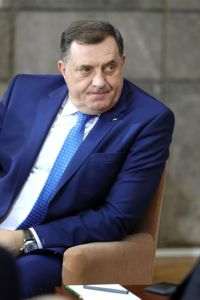The National History Museum of Romania is proud of a very valuable heritage, from all points of view. The general director of the museum, Dr. Ernest Oberländer-Târnoveanu, stated that in the 52 years of existence of the National History Museum of Romania, the collection grew from 50,000 pieces to over 18 million. He also specified the total value of the pieces: "Today, I can say that the National History Museum of Romania is the richest public institution, after the National Bank. Our heritage is valued at over 1.75 billion lei and only with what I have bought this year and with what we will introduce into the heritage we will certainly exceed two billion lei". The director of MNIR also specified: "Despite what is said, Romania is not a country so rich in heritage and it is not endless and inexhaustible. Therefore, museum institutions have the primary task of gathering, protecting and putting in value this heritage. In fact, museums live through their heritage, through their collections and through the people who watch over them, study them and value them. Museums are not dead places, they are very dynamic institutions and figures speaks for itself how dynamic the National History Museum of Romania is. In the 52 years of its existence, our collection has grown from 50,000 pieces to over 18 million pieces. Of course, 16 million of them are the national philatelic collection has become part of our heritage, but in the last ten years the collection has grown by over 100,000 pieces, sometimes of a rarity and a beauty that we, as professionals, would never have imagined that we would have the opportunity to have at the National History Museum of Romania". He said that this increase in heritage was done in several ways, and one of them was through donations: "I want to tell you that of the 100,000 pieces that the museum has in its collection in the last ten years, more than half they come from donations. (...) The museum has been enriched with extraordinary collections thanks to people who were not only enlightened, but also very generous". The director mentioned, among those who donated goods, the academician Andrei Pippidi, who donated a very important part of Nicolae Iorga's legacy, Prof. Philip Palade, who donated the gold medal of the first Romanian who benefited from the Nobel Prize, George Palade, Sandra de Laszlo from Great Britain, who donated manuscripts, photographs and objects related to the Romanian monarchy, Margareta Pâslaru, Corina Chiriac, Dan D. Dimăncescu, who donated a very important archive regarding the anti-Antonesian resistance during the war and Romania's participation in the Paris Peace Conference from 1945-1947, prosecutor Ilie Picioruş, who donated a complete collection of Romanian postage stamps from 1945 to the present, the Embassy of the Republic of Cuba in Bucharest and the Ministry of Finance, which transferred a fabulous historical library that had gathered there for over 160 years: "In addition to donors, the collection also grew through acquisitions, both from our funds and from acquisitions made by virtue of the right of pre-emption to the Ministry of Culture and you will see in the exhibition the most recent pearl of the crown, a cup of the miners' guild from Transylvania and the Land of Bârsei, from 1567, a masterpiece of Renaissance art from Romania, which was bought about a month ago, or Queen Maria's notebook. (...) The acquisitions are extremely numerous and extremely valuable". He specified that the third source of enrichment of the MNIR heritage is archaeological research: "The museum manages 11 archaeological sites spread throughout the country that cover discoveries from the Neolithic era to the Middle Ages. (...) In addition to the current excavations, we did excavations in our own warehouses and in the last 10 years thousands of objects that were not inventoried were introduced into the heritage".
The manager also mentioned the collaboration with the judicial institutions for the recovery of Dacian gold pieces, hoards of Dacian gold and silver coins.


















































